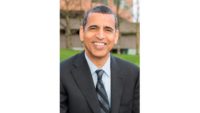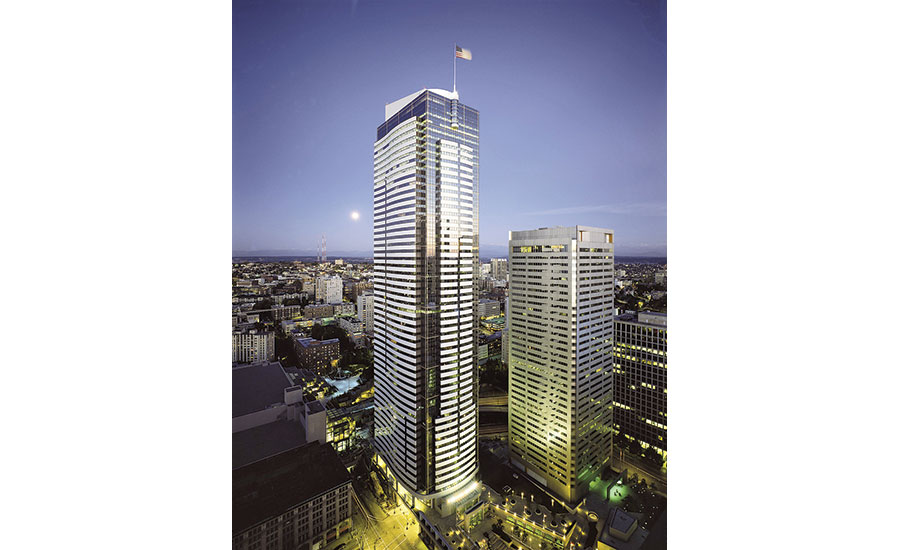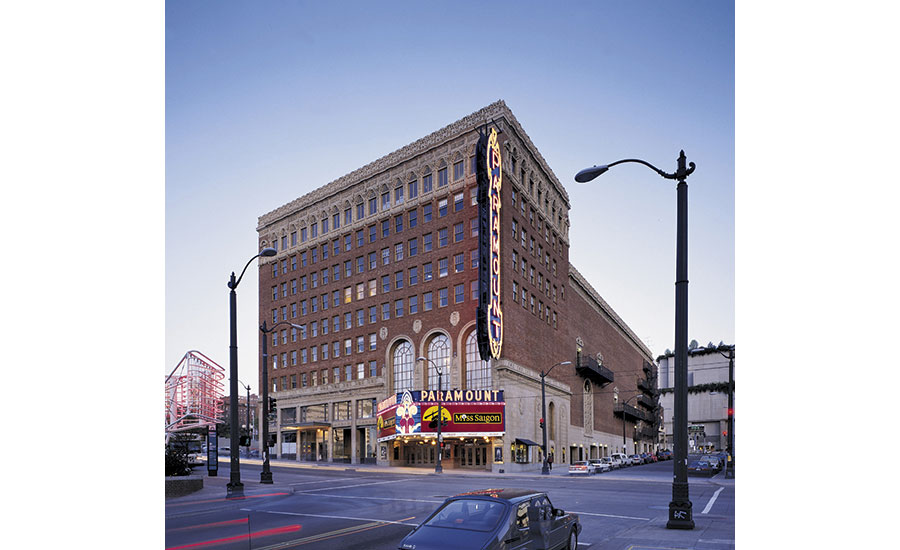ENR Northwest Legacy Award: Architect Bill Bain Jr. Draws on Local Color

Bain spent his career at NBBJ embracing new designs and technologies. “We had fun, we had very few rules. We just did the right thing to do.”
PHOTO COURTESY NBBJ/SEAN AIRHART

The design of Seattle’s Two Union Square reflects the area’s landscape and industry, from snow-capped mountains to airplane wings.
PHOTO COURTESY NBBJ

The renovation of the 1928 historic Paramount Theater, designed by Bain and the NBBJ team, helped revitalize Seattle’s downtown.
PHOTO COURTESY NBBJ

With Bill Bain Jr. as lead designer of Seattle’s U.S. District Courthouse, the building moved beyond the typical Greek temple model to reflect the city’s maritime tradition.
PHOTO COURTESY NBBJ




When designers at Seattle architect NBBJ presented their vision of the city’s Two Union Square development in the late 1980s, their model conformed to the clients’ request for a midsize building with a small, heavily ornamented “jewel box” in front. It was a rather conventional design and, according to partner Bill Bain Jr., a terrible idea.
“I walked up to the model and I put my arms around the jewel box and I ripped it off the base, and I put it on top of the medium-sized one in the back,” Bain says. The clients were shocked, but Bain’s intent was clear—this project would not merely copy similar buildings in Chicago or New York.
“I want you guys to go out with cameras,” Bain told the designers. “I want you to spend two weeks just photographing things that exemplify the Northwest.”
The team returned with images of mountains, lakes and Boeing aircraft and infused them into Two Union Square’s design. Each side of the 56-story tower reflects a facet of Seattle’s environment: the north side curves like an airplane wing, while another side follows the grain of a facing highway. The large courtyard on the site of the rejected jewel box evokes nearby mountains and streams.
“Bill felt very strongly that buildings needed to be of their place and of their time,” says David Yuan, an NBBJ partner. “He’s a Modernist by training and has remained true to simple, elegant buildings.”
Bain’s devotion to custom-tailored urban design has had a significant impact on developments in Seattle and other urban areas. Still a consulting design partner at NBBJ, the 88-year-old is a past president of both the Seattle chapter and the Washington State Council of the American Institute of Architects. Bain has also been president of the Seattle Symphony Orchestra and chairman of the Downtown Seattle Association. He has received the AIA Seattle Medal—its highest honor to an individual for lifetime achievement.
For his service, ENR Northwest names Bill Bain Jr. the recipient of its Legacy Award, which recognizes the enduring contributions of industry standouts to their professions, their communities and the built environment.
In addition to Two Union Square, Bain’s work in Seattle includes the 1981 restoration of the city’s historic Olympic Hotel, the U.S. District Courthouse and Pacific Place, the centerpiece of Seattle’s retail revitalization in 2000. Bain also worked on seven separate projects for the Battelle Memorial Institute as well as the Honolulu Municipal Office Building.
The son of architect and NBBJ founder William Bain, Bill Bain Jr. grew up in Seattle buildings his father designed. He studied architecture at Cornell University, where he joined the U.S. Army Reserve Officers Training Corps.
Trained as a combat engineer, Bain was preparing to serve in the Korean conflict when the war ended. Instead, he found himself leading an 85-man construction battalion in Alaska at age 23. “The military gives you so much more responsibility than you ought to have,” Bain says.
Bain returned to Seattle after his service, eager to do more than build models and do scut work for a big-name East Coast architect. In 1955, he joined NBBJ, then-named Naramore, Bain, Brady and Johanson. “It was a pretty stiff place back then,” he says. “They had a little bell at 8 a.m. and you’d better be at your drafting table.”
The firm was well-regarded for its technical innovation and talent, Bain says, but had yet to make a real impact as a designer. “We had buildings that didn’t leak, but they weren’t design winners.”
Bain never wanted to craft the firm around a single well-known architect; instead, he recruited a number of talented designers with a variety of approaches and gave them personal credit for their work. The firm’s first design breakthrough in 1957 was beating 10 competing firms for the Pacific War Memorial commission in Manila Bay in the Philippines.
“Bill shifted the firm and grew its platform to be well-recognized as a design leader,” NBBJ’s Yuan says.
When Jon Magnusson, senior principal at structural engineer Magnusson Klemencic Associates, met Bain in 1976, NBBJ still maintained a single office in Seattle. The firm now employs 700 in 11 locations worldwide. “Bill was part of that management team and design team that propelled that firm forward,” says Magnusson, MKA’s former chairman and CEO.
Magnusson worked with Bain on Two Union Square. “We were doing a lot of new things on that project with high-strength concrete. Bill really embraced the new technologies,” he says.
The building was designed around four 10-ft-dia columns that were basically steel pipes with high-strength concrete pumped inside from the bottom. It was a new approach at the time, Bain says.
The concrete fill was designed for 20,000 psi and was testing at 21,000. “They overpoured one time, and they had a heck of a time getting the extra concrete out of the way because it was so strong by that time.”
The concrete’s strength allowed Two Union Square to rise to 740 ft, with 10 corner offices on each floor. (“Every executive wants a corner office,” Bain says.)
Many of today’s new technologies and innovations are structural advances, Bain says. “The structural engineers don’t get enough credit. The wine stem shape of the Rainier Tower, for example: What you don’t see there is the really huge [mat foundation]. It’s deep and wide and comes out nearly as far as the building itself, so the tower is not going to tip over.”
Magnusson was part of multiple teams competing for the U.S. District Courthouse job, which NBBJ won. Bain was lead designer on the project, completed in 2004. “The presentation that Bill put together for the project was so warm and wonderful, filled with aspirations that related to the Northwest. It was a unique opportunity,” Magnusson says.
The courthouse design moves beyond the usual Greek temple design of similar court buildings in Washington, D.C., Yuan says. Its roof sweeps over the top like a sail and its grounds include a landscaped public plaza. “We asked: ‘What is the right approach for a civic space in the heart of the city?’ It was a space where you could have protests, you could have rallies, it wasn’t just a park.”
While Bain and his wife raised their family in nearby Bellevue across the lake, the couple returned to Seattle 33 years ago to live in a mixed-use building that they co-developed. “I like being in the center of things,” Bain says. “I like to keep track of the city. I want to take care of it.”
“Bill is at heart a city builder,” Yuan says. “As an architect, he was an urbanist, he thought not only in terms of a specific project but how it can invigorate the urban environment around it.”








